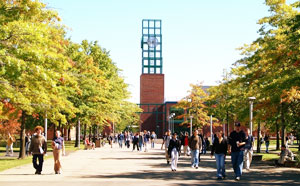Imagine these scenarios:
- A dormitory manager in Romania accepts money in return for providing campus accommodations to ineligible students.
- To improve his publication record in advance of a promotion review, a faculty member in Greece engages in plagiarism.
- In Nigeria, a faculty member pays a journal to publish her article without scientific review.
- In Ghana, several faculty members lose their jobs when they are discovered selling university admission to students who would not otherwise qualify.
- A professor in Bosnia and Herzegovina allows only those students who bought the book authored by the professor to take the examination.
- In the United States, the former president of a university was indicted for embezzlement after she submitted false bills for construction that had not occurred.

The upcoming Global Corruption Report: Education recommends that higher education institutions have clear codes of conduct for students, faculty and administrators.
These are all real cases. They demonstrate that corruption in higher education does occur. Its nature and prevalence is the topic of Transparency International’s Global Corruption Report: Education. This report offers a wide range of specific examples of the abuse of entrusted power for private gain, along with thoughtful analysis of the reasons why corruption persists, even in organisations devoted to discovering and transmitting knowledge.
As the report points out, four factors have converged to create conditions that can foster corrupt practices.
First, in some countries government support for higher education has lagged. Even in countries where government funding of higher education has increased, the rapid increase in the number of students has sometimes led to a lower per-student allocation. The response in some countries has been an erosion in salaries and conditions of service for instructional staff. To compensate, some instructional staff turn to inappropriate behaviour on campus such as selling grades; or seek supplemental employment opportunities off campus which draw them away from their university responsibilities.
Second, the decline in government support is often paired with an emphasis on universities finding more of their own funding. For example, one university in Thailand operates seven hospitals, including one veterinary hospital, and uses the profit to help finance operation of the wider university. Meanwhile, a university in Malaysia has established a consulting company through which it sells faculty expertise to business and industry. Faculty members are coming under intensified pressure to increase their teaching loads, teach in special weekend courses, secure funded research and commercialise the products of their research.
Third, as universities seek wider recognition through higher placement in international rankings, faculty members have come under intensified pressure to conduct research and publish in top-tier journals.
Fourth, as part of expecting universities to raise more of their own resources, these institutions are being granted greater administrative autonomy. Decisions that were once centralised in a state or provincial education ministry are now made by campus- and departmental-level administrators.
In short, faculty members are coming under greater job pressure, sometimes within contexts characterised by less oversight of their behaviour. Together, the impact of these factors creates the motive and the opportunity for corrupt practices to enter into the equation.
drawing on articles from the forthcoming
Global Corruption Report: Education.
While the Global Corruption Report: Education documents cases of corruption in higher education, it also offers strategies for addressing such problems. Among other things, the report argues the importance of clear codes of conduct for students, faculty and administrators; transparency in administrative procedures and decision-making; and mechanisms for calling problems to the attention of appropriate personnel. However, these actions must begin with wider recognition of the threat posed by corruption in higher education. Only as those involved in the operation of higher education systems and of individual colleges and universities understand the threat, will they be able to launch effective responses.
Carousel image: Creative commons, Wikimedia / Evangelos Dousmanis















 Connect with us on Facebook
Connect with us on Facebook Follow us on Twitter
Follow us on Twitter